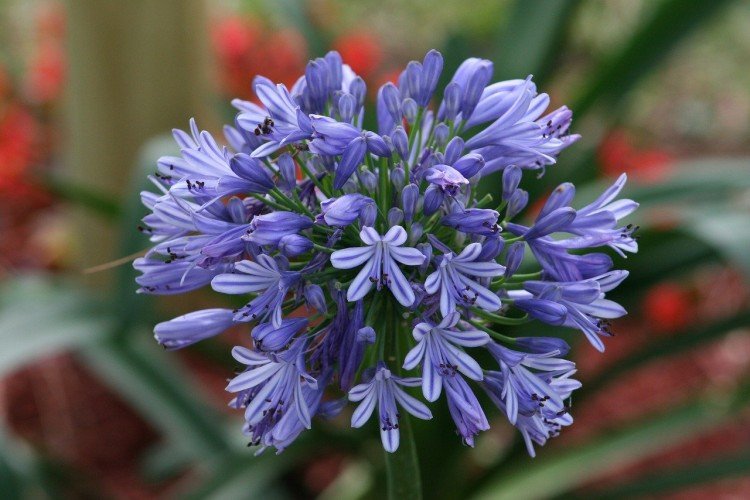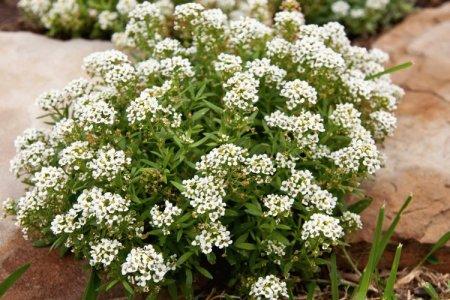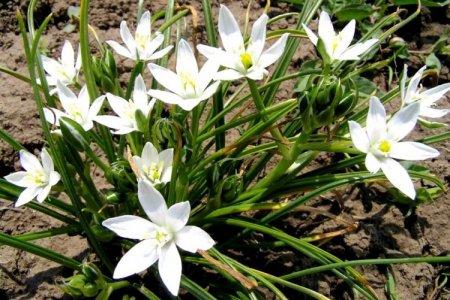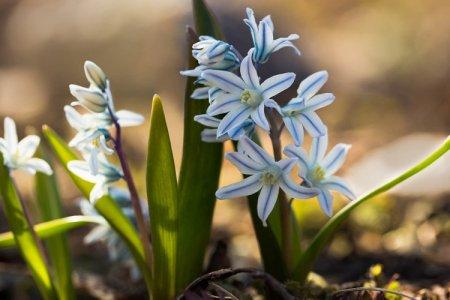
Gentle agapanthus has long been loved by gardeners for its elegance and lightness. It is grown to decorate the site or for cutting. And some species can even be kept in the room. Here's how to care for this adorable flower!
general information
Agapanthus is an African plant accustomed to harsh conditions. He has a very powerful rhizome, which helps him to adapt to different climates. Oblong dark leaves up to 70 cm long are collected in an elastic rosette.
Even before flowering, agapanthus is very decorative. And by summer, it produces a round, thick peduncle up to 1.5 m tall. A lush spherical inflorescence of small white, blue or purple bells blooms on it. Its diameter reaches 25 cm.
Interestingly, the color of the petals is not uniform. On an adult bush, up to 150 small flowers are formed. A nice bonus is that different types of agapanthus are perfectly crossed with each other, and each time they give a new spectacular result.

Agapanthus species
Due to the tendency to over-pollination, it is simply impossible to count all possible varieties and hybrids. But we figured out the main views that will come in handy!
Umbrella Agapanthus
Its leaves are quite wide in comparison with other relatives. A characteristic groove runs along the center, and the tip of each sheet plate is narrowed.

Eastern agapanthus
This species is most often cultivated indoors. It has thin grooved leaves and beautiful blue flowers. On the windowsill, the rosette grows smaller - in proportion to the size of the flowerpot.

African agapanthus
Relatively compact species up to 65 cm in height with bright blue or light blue inflorescences. It is on its basis that many popular decorative varieties were bred, including a whole series of snow-white ones.

Bell-shaped agapanthus
Quite a miniature species with narrow and thin leaves up to 15 cm. It is a deciduous variety with spectacular purple flowers. This agapanthus blooms in the second half of summer.

Agapanthus care
Alas, agapanthus is not the most unpretentious plant. But you can't call him completely capricious either. It is enough to learn the basic rules and adhere to them carefully!
Temperature and lighting
For agapanthus, a bright sunny area is definitely needed, otherwise its peduncles will stretch and deform instead of releasing beautiful buds. And in the worst case, if they lack nutrients, they can even break down.

Watering
The African lily needs frequent abundant watering with periodic loosening of the soil. Over time, they need to be gradually reduced as the temperature decreases. In addition, agapanthus adores high humidity in general. So you can safely spray it and arrange a warm shower, but you cannot wet the flowers.

The soil
Like all intensively growing and flowering agapanthus, agapanthus needs nutritious soil. Ideally, slightly acidic, so you can acidify it a little. We recommend adding sand, humus and some clay turf.

Fertilizers and feeding
Regular feeding once every 2-3 weeks begins to be applied at the end of March. At the same time, you can safely alternate ready-made mixtures for flowering plants with organic matter.

Pruning
Agapanthus is not pruned for formation or vigorous growth. But we advise you to immediately remove yellow and painful leaves, as well as faded flower stalks. So the deciduous rosette looks much neater.

Wintering
In the south, agapanthus can winter in the garden, but the rhizome still needs to be covered with leaves or special covering materials. In mid-latitudes, by the end of autumn, the rhizome is dug up and taken indoors. But you can grow agapanthus as an annual.

Summer care
Indoor flowerpots are recommended to be taken out in the summer to the street or an unglazed balcony.This can be started from the beginning of May, gradually increasing the residence time. Agapanthus is not afraid even of extreme heat and direct sunlight.

Transfer
Agapanthus is transplanted every few years. Indoor plants need a large and free flowerpot, otherwise the flower will not be able to produce buds. When transplanting, be sure to replace more soil.

Reproduction and planting of agapanthus
Agapanthus is hardly sown with seeds even in the garden, because it will bloom after that, at best, in 5 years. Most often it is propagated in the fall by division. You can do this in early spring.
Each division must have at least one full-fledged leaf outlet. The peculiarity is that they are not seated immediately. First, they need to be sprinkled with a substrate for a couple of days, and only then transplanted to a new place.

Pest and disease control
For all its exactingness to the place, light and humidity, in the matter of immunity, agapanthus does not cause any trouble at all. He almost never gets sick. Even for the appearance of a fungus, it is necessary to fill the root system for a very long time and systematically. And all because the plant contains its own antiseptic and fungicidal substances.
Sometimes scabbards and a spider mite hide in the depths of the outlet. But their appearance can be easily prevented if you maintain optimal air humidity and do not forget about scheduled spraying. And the simplest complex insecticides help to fight insects well.

Agapanthus - photo
The delicate beauty of agapanthus is very difficult to convey in words. Therefore, we have prepared a large selection of photos for you!




























